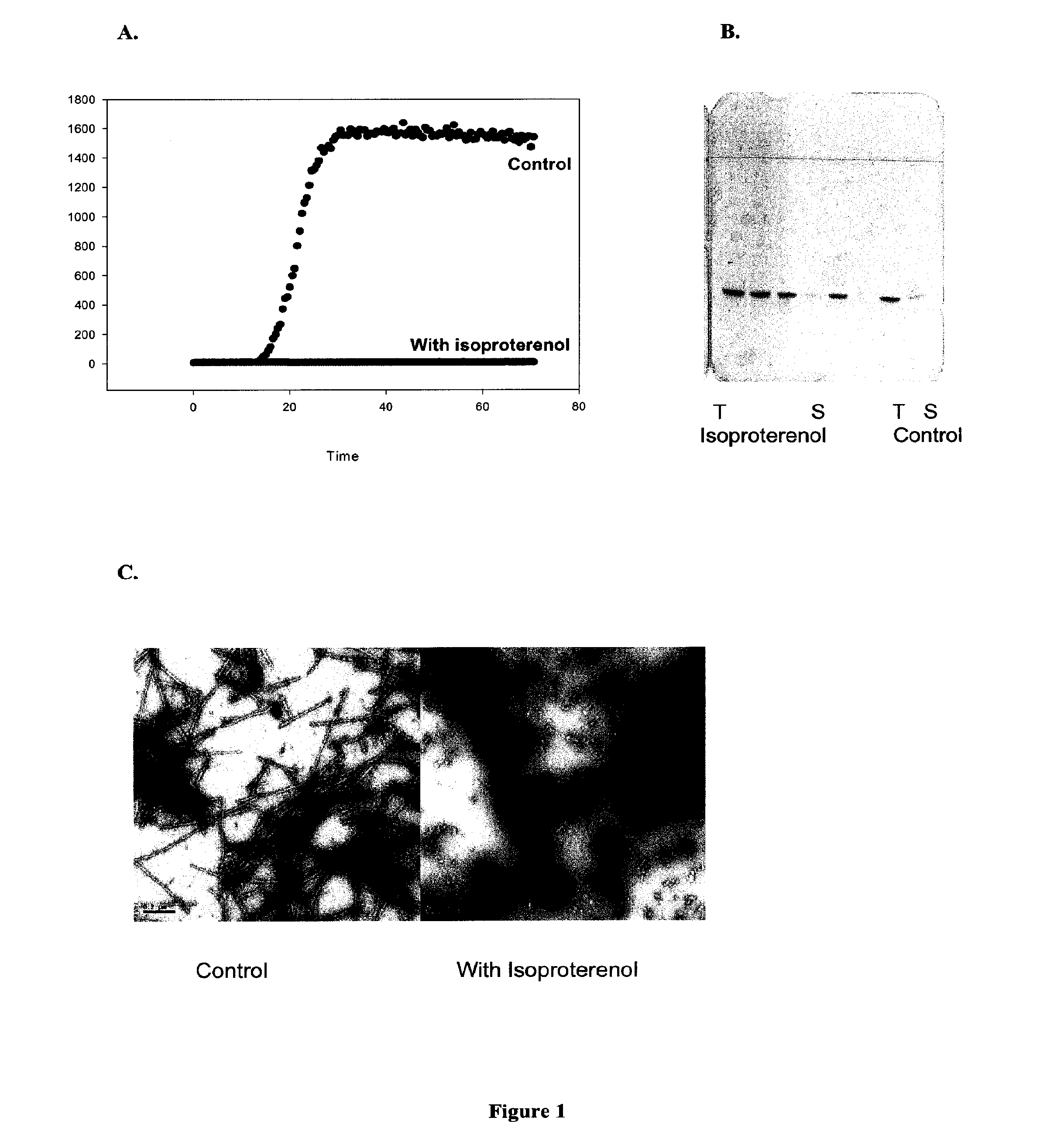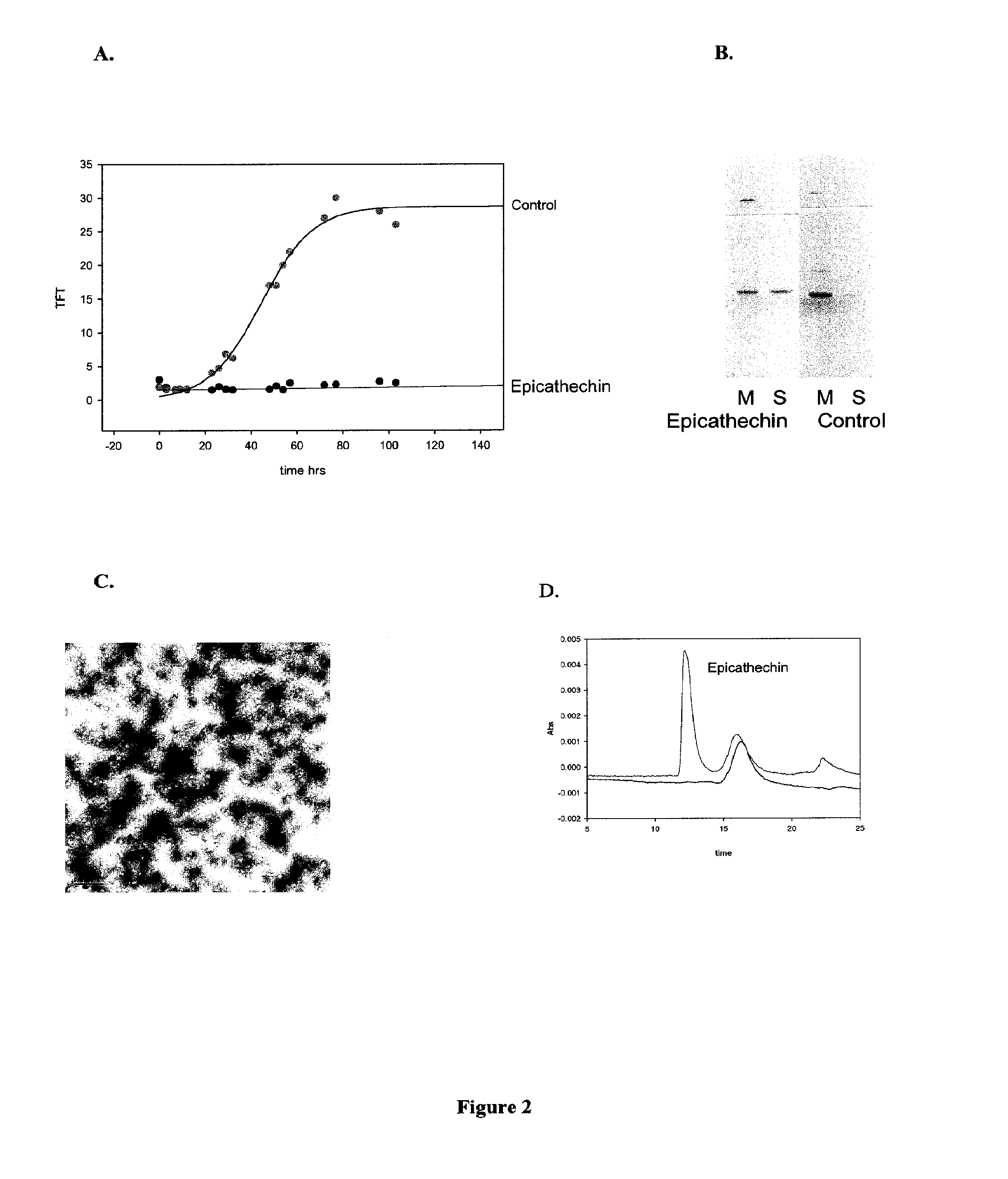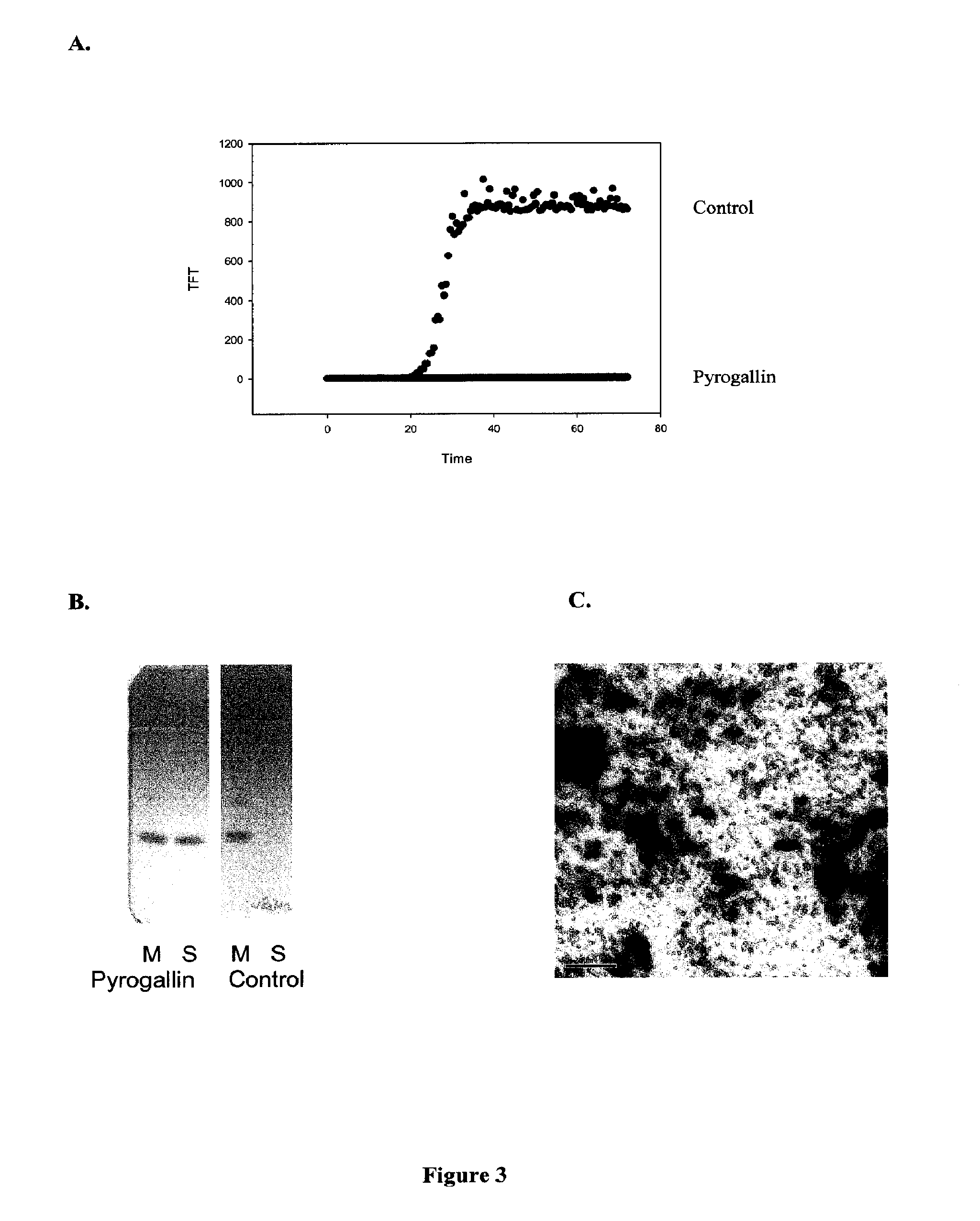Methods and compositions for treatment of neurological disorders
a neurological disorder and composition technology, applied in the field of neurological disorders, can solve the problems of profound change in the quality of life of the patient and the spouse or caregiver, and achieve the effects of reducing the risk, enhancing the delay in progression, and reducing side effects
- Summary
- Abstract
- Description
- Claims
- Application Information
AI Technical Summary
Benefits of technology
Problems solved by technology
Method used
Image
Examples
example 1
Cloning and Expression of α-Synuclein
[0210]Recombinant protein expression and a purification system can be developed using standard techniques well known in the art. (See for example, Maniatis, T., Fritsch, E. F., Sambrook, J. Molecular Cloning: A Laboratory Manual, Second Edition (Cold Spring Harbor Laboratory, Cold Spring Harbor, N.Y., 1989).
[0211]Sample Preparation. In some embodiments, human wild type α-synuclein was expressed in the E. coli BL21(DE3) cell line transformed with pRK172 / α-synuclein WT plasmid (kind gift of M. Goedert, MRC Cambridge) and was purified. 2 liters of cells were induced with 0.5 mM isopropyl β-D-thiogalactopyranoside and the resulting pellet was lysed by sonication at 0° C. in 50 mM NaCl, 20 mM Tris-HCl, 0.10% (v / v) Triton-X100, 0.20 mM phenylmethylsulfonyl fluoride at pH 8.0. The lysis suspension was brought to 30% saturation with ammonium sulfate at 0° C. (pellet discarded) followed by 50% saturation with ammonium sulfate. The resultant pellet was dia...
example 2
Primary Assays Utilized for Identifying Compounds that Inhibit, Reverse, Decrease, or Prevent α-Synuclein Fibrillation and / or Aggregation
Primary Assay
[0213]Thioflavin Assay: The primary assay to detect α-synuclein fibrillation and / or aggregation utilized the fluorescent dye thioflavin T (referred to as ThT or TFT) which binds relatively specifically to fibrils and leads to enhanced fluorescence emission. Thioflavin T absorbs at 450 nm and emits at 485 nm; fluorescence increases 40-fold in the presence of beta-sheet conformation (LeVine and Scholten J. D. Screening for pharmacologic inhibitors of amyloid fibril formation. Meth Enzymol 1999, 309 (Ch. 29): 467-76.), Thioflavin T is obtained from Fluka Chemika or other vendors. Fibril formation was monitored by Thioflavin T fluorescence using a Fluoroskan Ascent CF plate reader (Labsystems, Inc.).
[0214]Aggregation Inhibition Thioflavin T Assay: In some embodiments an aggregation inhibition assay was conducted. Protein solutions of 150 μ...
example 3
Secondary Assays Utilized for Identifying Compounds that Inhibit, Reverse, Decrease, or Prevent α-Synuclein Fibrillation and / or Aggregation
[0218]Secondary Assays
[0219]Electron Microscopy: Those samples from Example 2 that showed inhibition were then analyzed by electron microscopy and assayed for soluble protein to confirm inhibition of fibrillation. Transmission electron micrographs were collected using a JEOL JEM-100B microscope, operating with an accelerating voltage of 80 kV. Samples were deposited on Formvar-coated 300 mesh copper grids and negatively stained with 1% aqueous uranyl acetate.
[0220]Centrifugation to separate soluble and insoluble protein: Samples after 72 hr incubation were centrifuged in an Eppendorf microfuge at 14,000 rpm for 30 min to separate soluble from insoluble material. The protein concentration in the uncentrifuged sample, and in the supernatant was analyzed for total protein concentration, usually using sodium dodecyl sulfate polyacrylamide gel electro...
PUM
| Property | Measurement | Unit |
|---|---|---|
| Time | aaaaa | aaaaa |
| Time | aaaaa | aaaaa |
| Therapeutic | aaaaa | aaaaa |
Abstract
Description
Claims
Application Information
 Login to View More
Login to View More - R&D
- Intellectual Property
- Life Sciences
- Materials
- Tech Scout
- Unparalleled Data Quality
- Higher Quality Content
- 60% Fewer Hallucinations
Browse by: Latest US Patents, China's latest patents, Technical Efficacy Thesaurus, Application Domain, Technology Topic, Popular Technical Reports.
© 2025 PatSnap. All rights reserved.Legal|Privacy policy|Modern Slavery Act Transparency Statement|Sitemap|About US| Contact US: help@patsnap.com



